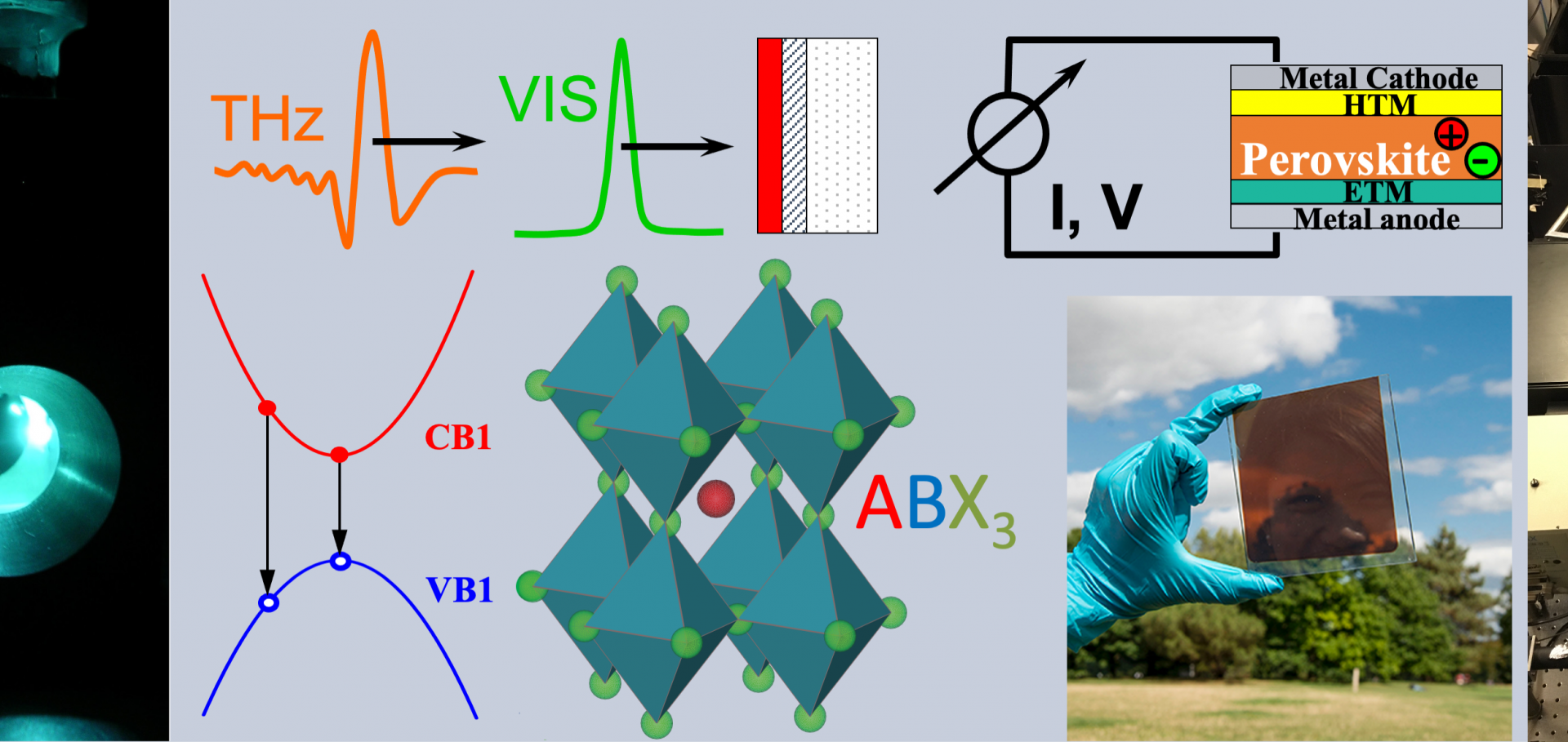Topological Dirac semi-metals as novel, optically-switchable, helicity-dependent terahertz sources
Abstract:
The generation and control of terahertz pulses is vital for realizing the potential of terahertz radiation in several sectors, including 6G communication, security and imaging. In this work, we present the topological Dirac semimetal cadmium arsenide as a novel helicity-dependent terahertz source. We show both broadband (single-cycle) and narrowband (multi-cycle) terahertz pulses upon near-infrared photoexcitation at oblique incidence. By varying the incident angle of the photoexcitation pulse, control of the emission frequency can also be achieved, providing a candidate for a tuneable narrowband terahertz source.Advances and challenges in understanding the microscopic structure-property-performance relationship in perovskite solar cells
Abstract:
The emergence of perovskite photovoltaic technology is transforming the landscape of solar energy. Its rapid development has been driven by the advances in our understanding of the thin-film microstructures of metal halide perovskites and their intriguing correlations with optoelectronic properties, device efficiency and long-term stability. Here we discuss the morphological characteristics of three key microstructure types encountered in perovskites, which include grain boundaries, intragrain defects and surfaces. To reveal detailed structural information of these microstructure types via tailored characterizations is crucial to probe their detrimental, neutral or beneficial effects on optoelectronic properties. We further elaborate the impacts of these microstructures on the degradation modes of perovskites. Representative examples are also presented, which have translated fundamental understandings to achieve state-of-the-art perovskite solar cells. Finally, we call for more attention in probing hidden microstructures and developing high-spatiotemporal-resolution characterizations, as well as harnessing the potential merits of microstructural imperfections, towards an elevated understanding of microstructure–property–performance relationships for the next solar cell advances.Strong absorption and ultrafast localisation in NaBiS2 nanocrystals with slow charge-carrier recombination
Abstract:
I-V-VI2 ternary chalcogenides are gaining attention as earth-abundant, nontoxic, and air-stable absorbers for photovoltaic applications. However, the semiconductors explored thus far have slowly-rising absorption onsets, and their charge-carrier transport is not well understood yet. Herein, we investigate cation-disordered NaBiS2 nanocrystals, which have a steep absorption onset, with absorption coefficients reaching >105 cm−1 just above its pseudo-direct bandgap of 1.4 eV. Surprisingly, we also observe an ultrafast (picosecond-time scale) photoconductivity decay and long-lived charge-carrier population persisting for over one microsecond in NaBiS2 nanocrystals. These unusual features arise because of the localised, non-bonding S p character of the upper valence band, which leads to a high density of electronic states at the band edges, ultrafast localisation of spatially-separated electrons and holes, as well as the slow decay of trapped holes. This work reveals the critical role of cation disorder in these systems on both absorption characteristics and charge-carrier kinetics.


